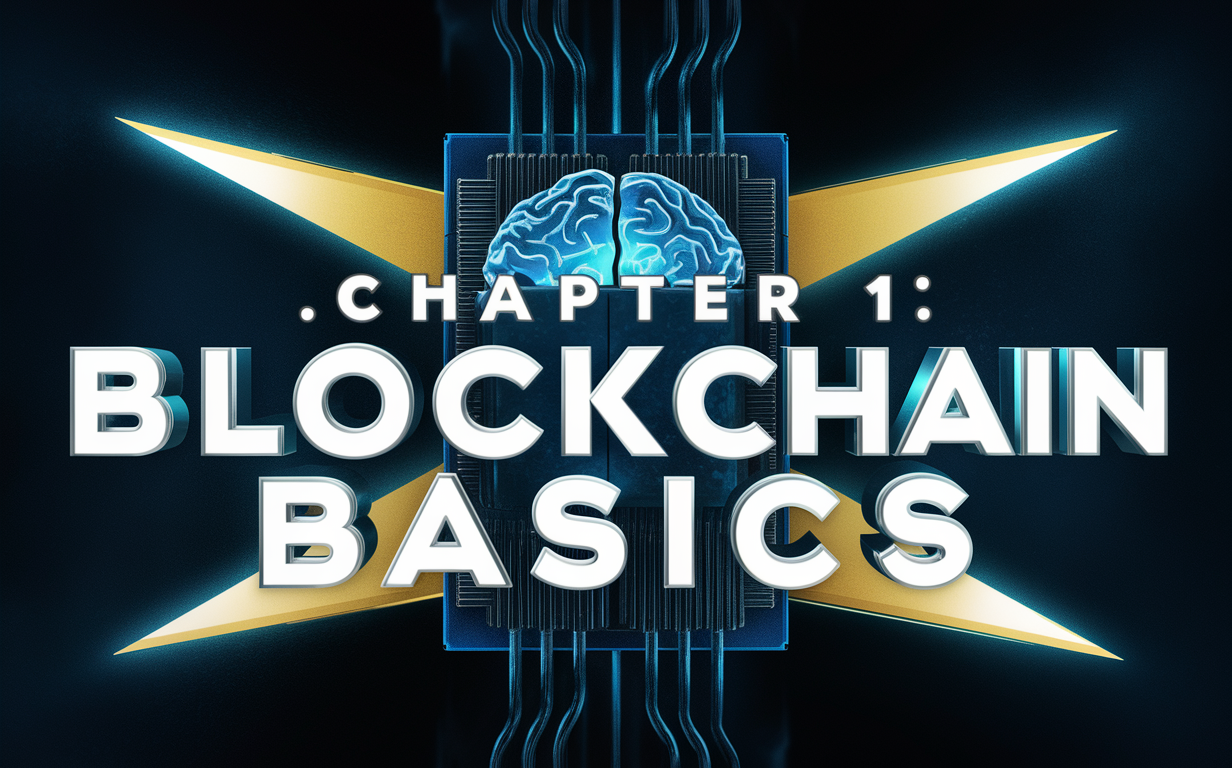Crypto Crash Course : Blockchain Basics
Chapter 1: Blockchain Basics

Blockchain Basics Introduction
Welcome to the first chapter of our crypto crash course! Before we dive into the world of cryptocurrencies, it's essential to understand the technology that makes it all possible: blockchain. Think of blockchain as the backbone of the crypto world. Let's break it down in a way that makes sense.
What is a Blockchain?
Definition and Fundamental Concepts
At its core, a blockchain is a digital ledger—a way of recording transactions or data that’s secure, transparent, and tamper-proof. Unlike traditional ledgers kept by banks or companies, a blockchain isn’t controlled by a single entity. Instead, it's decentralized and maintained by a network of computers called nodes.
How Blockchain Works: Blocks, Chains, and Nodes
Imagine a chain made up of blocks. Each block contains a list of transactions. When a block is full of transactions, it gets added to the chain in a linear, chronological order. Once a block is added, it can't be changed. This is what we mean when we say blockchain is immutable.
Nodes are the individual computers that maintain and verify the blockchain. Each node has a copy of the entire blockchain and works to ensure that every transaction is valid. When you make a transaction, it’s broadcasted to the network of nodes. They then verify it through a consensus mechanism (more on that later) and add it to the blockchain.
The Difference Between Public and Private Blockchains
Not all blockchains are created equal. There are public and private blockchains:
- Public Blockchains: These are open to anyone. Bitcoin and Ethereum are prime examples. Anyone can join the network, validate transactions, and view the ledger.
- Private Blockchains: These are restricted to a specific group. Only certain users can participate, making them more suitable for businesses or organizations that need tighter control over their data.
Key Features of Blockchain Technology
Now that we’ve got the basics down, let’s look at the key features that make blockchain so revolutionary.
Decentralization
Decentralization means that no single entity has control over the entire blockchain. Instead, control is distributed across all the nodes in the network. This reduces the risk of corruption and ensures that the system is more resilient against attacks.
Transparency
One of the most exciting aspects of blockchain is its transparency. Every transaction is recorded on a public ledger that anyone can view. This openness helps to build trust because it’s much harder to hide fraudulent activity.
Immutability
Once a transaction is added to the blockchain, it can’t be changed or deleted. This immutability ensures the integrity of the data. If someone tries to alter a block, it would require changing all subsequent blocks, which is practically impossible in a large network.
Security
Blockchain uses advanced cryptography to secure data. Each block is linked to the previous block through a cryptographic hash—a unique code generated based on the data in the block. This makes it extremely difficult for anyone to tamper with the data without being detected.
Consensus Mechanisms
To keep everything running smoothly and securely, blockchains rely on consensus mechanisms. These are protocols that nodes use to agree on the validity of transactions. Let’s look at some of the most common ones..
Proof of Work (PoW)
Proof of Work is the original consensus mechanism used by Bitcoin. In PoW, miners (nodes that validate transactions) compete to solve complex mathematical puzzles. The first one to solve the puzzle gets to add the new block to the blockchain and is rewarded with cryptocurrency. This process requires significant computational power, which helps secure the network but also consumes a lot of energy.
Proof of Stake (PoS)
Proof of Stake is a more energy-efficient alternative to PoW. Instead of miners, PoS uses validators. Validators are chosen to create new blocks based on the amount of cryptocurrency they hold and are willing to "stake" as collateral. If they validate transactions correctly, they earn rewards. If they try to cheat, they lose their stake. This method reduces the need for vast amounts of computational power and energy.
Other Consensus Mechanisms
There are several other consensus mechanisms, each with its own advantages and use cases:
- Delegated Proof of Stake (DPoS): In DPoS, stakeholders vote for a small number of delegates who then validate transactions and create blocks. This method is faster and more scalable than PoW and PoS.
- Proof of Authority (PoA): PoA is used in private blockchains. It relies on a small number of trusted nodes (authorities) to validate transactions. This method is efficient and fast but less decentralized.
Each consensus mechanism has its strengths and weaknesses, and the choice of mechanism can significantly impact the performance and security of a blockchain.
Wrapping Up
And there you have it—a friendly introduction to blockchain basics. We've covered what a blockchain is, how it works, the key features that make it unique, and the different consensus mechanisms that keep everything in check. Understanding these fundamentals will give you a solid foundation as we move deeper into the world of cryptocurrencies in the coming chapters.
Stay tuned as we next dive into the exciting realm of cryptocurrencies, starting with the big players like Bitcoin and Ethereum. Let's continue this journey together!